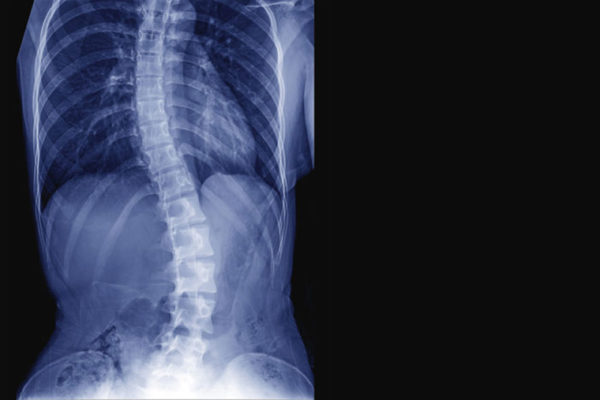Scoliosis linked to essential mineral
An inability to properly use the essential mineral manganese could be to blame for some cases of severe scoliosis, according to a new study from the School of Medicine.
New chief of spine surgery named
Munish C. Gupta, MD, has been appointed professor and chief of spine surgery in the Department of Orthopaedic Surgery at Washington University School of Medicine in St. Louis. He comes from the University of California, Davis and will assume his new duties Sept. 1.
Severe scoliosis linked to rare mutations
Children with newly identified rare mutations in two genes are about four times more likely to develop severe scoliosis than their peers with normal versions of the genes, scientists have found.
Study confirms benefit of back braces in treating scoliosis
While back braces have been used for decades to treat scoliosis, studies of their effectiveness have been inconclusive. But new results from a clinical trial provide the strongest evidence yet that braces work in a significant percentage of cases. Shown is one of the principal investigators, Matthew B. Dobbs, MD, examining an X-ray of a patient whose spine was fused to treat scoliosis.
Lenke named chief of spine surgery
Lawrence G. Lenke, MD, has been appointed chief of spinal surgery in the Department of Orthopaedic Surgery at Washington University School of Medicine in St. Louis. He succeeds Keith H. Bridwell, MD, head of the spine service for the past 28 years.
Scientists identify first gene linked to scoliosis
An X-ray of a case of scoliosis.Physicians have recognized scoliosis, the abnormal curvature of the spine, since the time of Hippocrates, but its causes have remained a mystery — until now. Researchers at the School of Medicine and collaborating institutions have discovered a gene that underlies the condition, which affects about three percent of all children. The finding lays the groundwork for determining how the genetic defect leads to the C- and S-shaped curves that characterize scoliosis.
Scientists identify first gene linked to scoliosis
An X-ray of a case of scoliosis.Physicians have recognized scoliosis, the abnormal curvature of the spine, since the time of Hippocrates, but its causes have remained a mystery — until now. Researchers at Washington University School of Medicine in St. Louis and collaborating institutions have discovered a gene that underlies the condition, which affects about three percent of all children. The finding lays the groundwork for determining how the genetic defect leads to the C- and S-shaped curves that characterize scoliosis.

